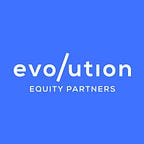How a CEO Should Measure the Efficiency of Investment in R&D
Any software company requires a long-term investment in R&D to build and maintain the main asset it sells, software. As I wrote in my other post about the future of software delivery, today’s software products require constant investment.
I’ve been in the software business since the early ’90s. I founded software businesses, exited them, and even had an IPO with one of them. I acquired dozens of software businesses and integrated them into my groups.
As chief technology officer (CTO), I directly managed small and large distributed R&D teams of over 800 people across ten countries. I had budgets of dozens and hundreds of millions of dollars under my responsibility. Regardless of the team size, I constantly challenged myself with whether I ran the R&D operation efficiently.
Over the years, I practiced several methodologies to run R&D. Some were more efficient than others. I constantly learned how to do better, achieve more and deliver high-quality products to the market faster. It is continuous learning. It never stops.
As a chief executive officer (CEO), I looked at R&D differently than when I was a CTO. After all, R&D is an investment. An investment that needs to have a valuable return over time. As a CEO, I could invest funds in multiple areas to drive growth. I had to decide how much I should invest in R&D vs. other options I had. I had to find metrics to learn if my investment was eventually moving the needle for the business.
You can increase your R&D budget almost infinitely — headcount, development tools, cloud services, storage, security … name it. You can spend your budget forever. Where do you set the bar, then?
When looking at a software business, there are three main buckets of investment to look at — Sales & Marketing (S&M), General & Administration (G&A), and Research & Development (R&D).
When looking at software businesses across their revenue range, you can calculate how much they spend on each bucket as a percentage of their revenue. This is known as the operating ratios. When the sum is more than 100%, the business spends more than its revenue. In other words, it burns cash, not generate it.
In the software business, it is expected that in the early stage of the business, you will invest more in R&D to create the primary value for the company, its software product. On average, businesses invest 90–60% of their revenue in R&D in reaching a stage where their product’s value is big enough to grow their business.
Once a company crosses the $10m ARR threshold, it is expected that the investment in R&D will start to decrease while the investment in S&M should increase. In other words, the product reached a critical mass where you need more salespeople to engage with customers and sell it while incrementally improving it.
The following chart shows the average investment in R&D by ARR range. As this is an average, you can expect some outliers in the market that invest significantly more or less.
Having the R&D spend benchmark, you can have a guiding number to know what the expected investment in R&D is that you should have.
As mentioned earlier, your investment should have a return. How will you know if the amount of money you invested creates the impact you need on your business?
Many variables can impact the return on R&D investment. If you ask your CTO or VP of R&D, they will share a long list of tasks that require significant investments while their impact on the business is for the long term — technical debt, code rewrite, architecture, migrations, upgrades, etc.
As a CEO, or CFO, of a business, you should have a simple formula that can give you a leading indicator about your investment in R&D without knowing how to run this operation or needing clarification on its technical terms.
The formula is as simple as :
R&D Efficiency = (This year’s ARR — Last year’s ARR) / (Last year’s R&D investment)
We can draw the following chart when looking at businesses across their ARR growth stages. For example, if your ARR growth is 40%, you should expect your R&D efficiency to be 2.
Every R&D person looking at this chart may claim that revenue is an outcome of Sales and not R&D. Sales and Marketing must perform and have their efficiency charts; ultimately, they sell what R&D is making, the product. If that product is on the spot with what the market needs, the revenue growth reflects that. Otherwise, the growth will be soft.
Measuring the return on any investment in your business is important. Now you know how to measure your investment in R&D.
Wittern by: Yuval ben-itzhak
